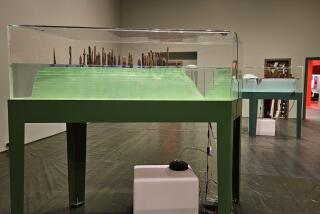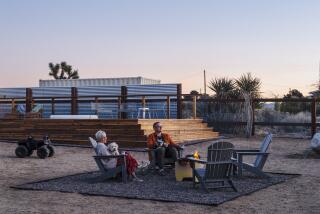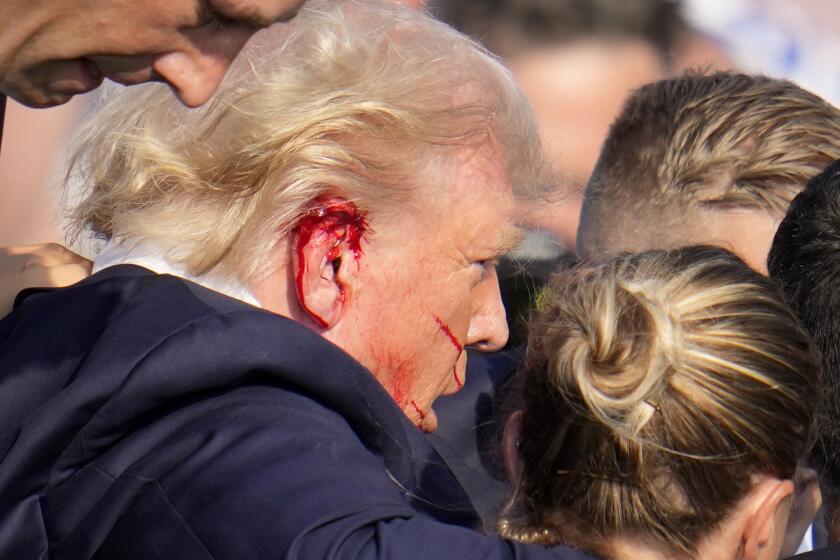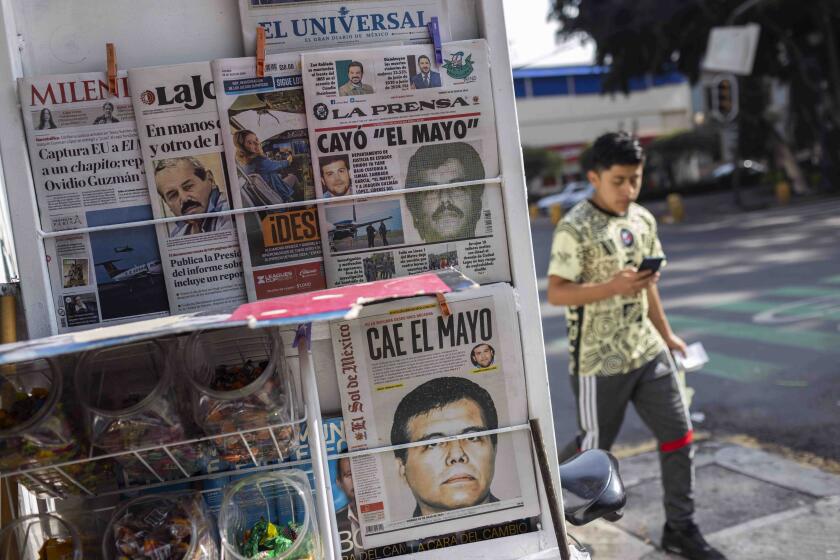New art museum celebrates the distinct Pacific Northwest
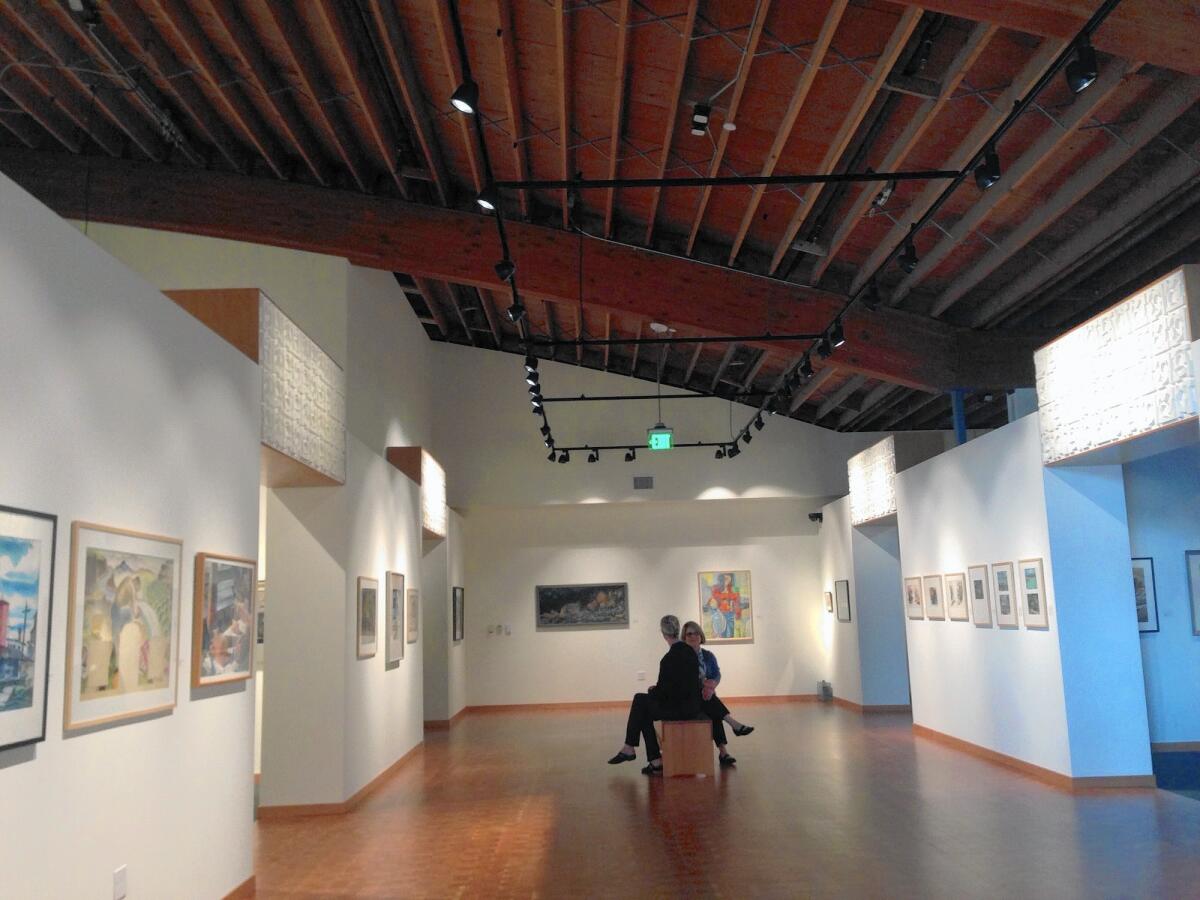
Lindsey Echelbarger surveyed the Central Gallery, his favorite spot in the newly opened Cascadia Art Museum.
Richly colored paintings glowed in the soft light, set off by crisp white walls and soaring, beamed ceilings. Patrons leaned in close, transfixed by the sweep and detail of the carefully placed works. A soft murmur rose and fell in the afternoon hush.
“The checkout stands were right about where our front desk is now...,” Echelbarger, the museum president and founder, gestured toward the East Gallery, “and over there was either the deli or the bakery.”
Cascadia Art Museum is housed in a 1960s-era Safeway supermarket, saved from destruction by its elegant midcentury modern bones and the region’s intense eco-friendliness.
Its neighbors in this former produce palace are a distillery named Scratch, which boasts artisanal gin and vodka infused with locally grown herbs, and Brigid’s Bottleshop, which offers more than 300 craft brews (18 on tap) and is named for a saint who turned bathwater into beer.
If you want a monument to everything Pacific Northwest — gray skies and craggy mountains, environmental correctness and the locavore life, salmon, hops — look no further than the sprawling Cascadia in this Seattle suburb on the edge of Puget Sound.
It’s all here, except perhaps for flannel shirts and funny facial hair; those largely remain in Portland, Ore., where they are welcome to stay.
Cascadia opened its doors in September with a mission to celebrate art and artists linked to the sweeping watershed of the Cascade Range. The boundaries, more or less, are Alaska and British Columbia to the north, a thin slice of California to the south, the Pacific Ocean to the West and a hint of Montana to the East.
Artists need not be born here, and not every painting must reflect, say, Mt. Rainier or Seattle’s Pike Place Market. Time is just as important as place; works date from the late 19th century through the middle of the 20th.
Cascadia curator David F. Martin says Northwest art differs from that found in the rest of the country because of the region’s early influx of immigrants from China and Japan. Combine such influences with “the Western mode and Native American culture, and that affects the visual language of the region.”
The most celebrated artists in these parts were the so-called Big Four — Mark Tobey, Morris Graves, Kenneth Callahan and Guy Anderson — described by Life magazine in 1953 as the “Mystic Painters of the Northwest.”
They were linked, Life wrote, by their “mystical feeling toward life and the universe,” which stemmed from their “awareness of the overwhelming forces of nature which surround them, partly from the influence of the Orient whose cultures have seeped into the communities that line the U.S. Pacific Coast.”
The artists grumbled about being pigeonholed — inaccurately, no less — but the magazine served its purpose, raising their stature and the region’s.
Cascadia’s current exhibit of 160 or so works celebrates the Northwest Watercolor Society’s 75th anniversary. But paintings by the Big Four take pride of place in the Central Gallery. Four brooding Graves oils from 1935, rendered in the dark hues of a Seattle winter, hang beneath arced beams that resemble a ship’s interior.
Echelbarger, who began collecting Northwest artists’ work a generation ago, loves the Graves paintings in part because of the women who owned them.
Elizabeth Bayley Willis, a rare female museum curator in post-World War II America, was an early Graves supporter. When Willis died, the paintings were passed down to her daughter, noted Northwest photographer Mary Randlett, best known for her portraits of the region’s artists.
But as he wanders through the museum he helped create in a grocery store that was almost torn down, Echelbarger is stopped by an abstract work from the 1950s. Intricate figures in golds and browns cover the painting, which is overlaid with a lacework of white lines that echo traditional Chinese calligraphy.
His voice drops. He is equal parts gleeful and reverent.
“This is a Mark Tobey,” Echelbarger says. “I told our curator, ‘You know, I think this is one of the best Tobeys I’ve ever seen.’ He said, ‘No, it’s not.’ I said, ‘What do you mean?’ He said, ‘It’s the greatest Tobey I’ve ever seen.’ I said, ‘Well, I guess we’re on the same page then.’ This has never been exhibited before.”
Echelbarger is just as thrilled by a 1903 landscape in pinks and blues called “Glacier Peaks During Storm” by Abby Williams Hill, whose life was as interesting as her artwork.
Hill was born in 1861, had four children and an ailing husband and still managed to travel the West, paintbrush and oils in hand, documenting the region for the Great Northern and Northern Pacific railroads.
“They made travel posters out of her paintings, and they gave her a free pass that was part of her pay, and so she traveled all summer long,” he said. “She would put herself in a harness and be lowered down over cliffs to get closer and paint. She did it all outside.”
Everything about the museum complex was chosen with as much focus on the Pacific Northwest as the artwork that fills its soaring spaces.
Panels over the gallery entrances were cast from the molds used to create a fountain for Seattle’s aggressively plain municipal building. Both structure and fountain were eventually demolished, but the casts — designed in 1962 by University of Washington sculptor Glen Alps — were repurposed for the art museum.
The museum occupies half of the 22,000-square-foot former grocery store. The establishments that fill the other half also were picked for their Pacific Northwest flair.
At Brigid’s Bottleshop one recent Saturday, the beers on tap spanned the region, allowing patrons to drink their way through Cascadia, sipping, for example, from north to south: Midnight Sun Panty Peeler Tripel (Anchorage), Gilgamesh Fresh Prince of Ales Fresh Hopped Double IPA (Salem, Ore.) and Skookum’s Mammoth Jack Double IPA (Arlington, Wash.).
What Echelbarger wants most is for visitors to drop their smartphones, pull their earbuds out and learn something about the Pacific Northwest and the art that defines it.
“There’s no reason,” he said, “why our artists shouldn’t take their rightful place in the history of the United States’ art.”
Twitter: @marialaganga
More to Read
Sign up for Essential California
The most important California stories and recommendations in your inbox every morning.
You may occasionally receive promotional content from the Los Angeles Times.

